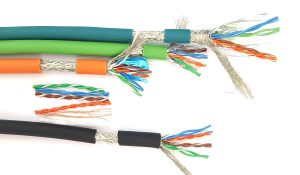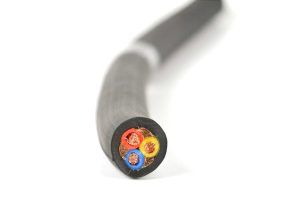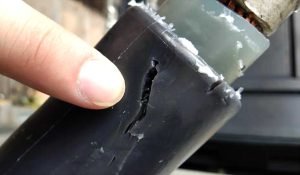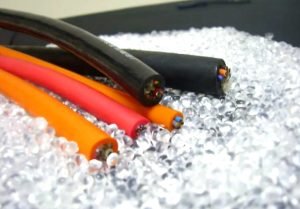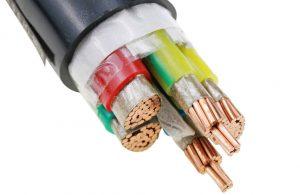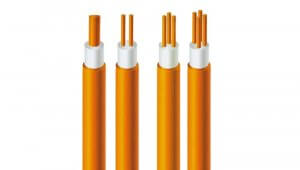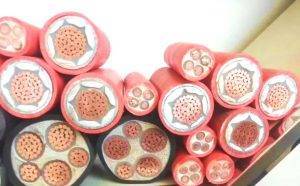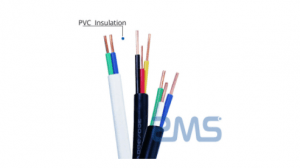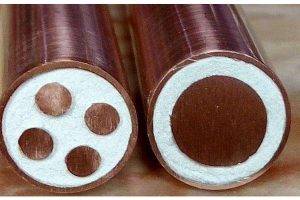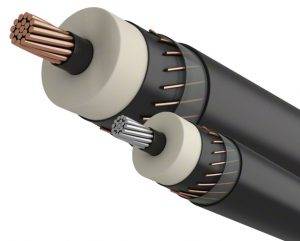The silicone wire uses silicone rubber as an insulating layer.. This material can resist high temperatures and has great flexibility.. Due to its stability in electrical performance and outstanding resistance to aging, this wire is widely used in the fields of metallurgy, Energy, electronics and aviation.
Wire insulation

Wire insulation is the process of covering an electrical conductor with a non-conductive material to prevent electrical current from escaping and causing a short circuit.. The materials used to insulate cables can be of different types, including PVC, PE, XLPE, PTFE, goma, etc.
Different types of insulated cables are used depending on the specific application and performance requirements. On this page, ZMS provides information and comparisons on the performance of cable insulation materials. Knowing this information, can more effectively select the suitable insulated cables For your application.
What Is Rubber Cable Wrapping?
Rubber cable wrapping is the application of a rubber material around the conductor of the cable to protect it from moisture, dust and other external factors that can damage it. The rubber material used in this process is highly resistant and flexible.. This makes it an ideal choice for special electrical and communication cables..
like human skin: Self-healing Cable Insulation
According to the study, the most frequent accidents caused by cables are due to aging or damage to the insulating cover. Wire insulation failure can easily cause power outages and leakage. And it results in serious economic losses and creates a security risk. So, is it possible for the outer sheath of the cable to repair itself like human skin?
What is TPU Cable? New Type of Industrial Cables
TPU cable is thermoplastic polyurethane cable. It is one of the new types of electric cables on the market. TPU is a thermoplastic elastomer made up of a linear block copolymer containing hard and soft chain segments.. This synthetic polymer is robust and durable., making it an excellent choice for use on cables.
What is LSZH Cable and Where to Use It?
LSZH cable is low smoke halogen free cable. low smoke emission, namely, reduces the production of harmful objects during combustion. Halogen is a toxic gas for humans. Halogen free means no toxic gases are released in the event of a fire.
Mineral Insulated Heating Cable Applications
Mineral insulated heating cables use a single or multi-alloy electrical heating wire as the heat source. The magnesium oxide high-purity, high-temperature electrofused crystalline is used as a heat-conducting insulator.
Continuous stainless steel or seamless copper tubes are used as lining. This heating cable is manufactured by a special production process.
Introduction to Mineral Insulated Cables
The mineral cable is the first fire cable, originated in Switzerland, later developed by the UK to a specific scale and custom fire standard BS6387 standard.
MICC cables generally refers to mineral insulated cables.. My cable can also be divided into mineral insulated cable and mineral fire resistant cable..
Common Defects in PVC Cable Material
PVC cable material is manufactured from polyvinyl chloride as the base resin., to which stabilizers are added, lubricants and inorganic fillers. It is prepared by mixing, kneading and extruding.
Although this material has mediocre properties and is not environmentally friendly enough, it is less expensive and the process is simpler. So, PVC remains one of the most widely used cable materials.
Advantages and Disadvantages of Mineral Insulated Cables
1. The price is relatively high, from 2 a 5 times higher than that of ordinary flame retardant cable.
This is the same cross section, but mineral insulated cable (cable MICC) has a great capacity overload, so if it has the same current carrying capacity, the cross section is reduced and the cost is reduced.
Naturally, it will be reduced, and considering the cost of subsequent replacement and maintenance, in fact, the cost of both is similar, but the initial investment will be relatively large.
But the service life of mineral insulated cable is 50-100 years, BTTZ life is even more than 100 years. Cables typically last more than 20 years.
Why we choose TR-XLPE as insulation of Medium Voltage power cable?
Power cable is the longest and most demanded cable product in power transmission, distribution and other essential electrical transfer lines.
Tubular water trees are water trees developed from insulating screens or conductive screens which are water trees from impurities or other defects in the insulation that develop radially towards the insulating screen and the conductive screen.

